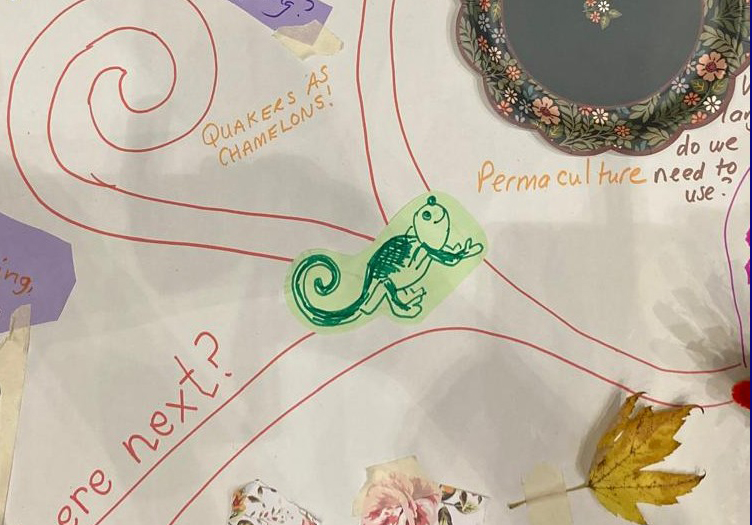A chameleon, a hedgehog and a baobab tree
A chameleon, a hedgehog and a baobab tree. What do these things have in common and what do they have to do with Quakers? These are all things which emerged out of the Radical Hearts, Open Minds consultation.

In seven different events held across Britain and online we have explored the kind of Quaker communities we would like to become, how we might get there and what we do now that helps us thrive.
Emerging ideas were that our communities are places where we understand and practise our spiritual tradition well. There was a lot of excitement about holding different kinds of meetings for worship in different places and at different times that might meet the needs of a variety of people. Meetings for worship in nature and in public places, like town centres, were popular thoughts
It was recognised how important it is for communities to know each other better and to understand the Quaker way. People were keen on lots of different opportunities to meet together, including more residentials, walking groups film clubs, and shared meals. We recognised the need to increase diversity in our communities and that we need to think about how we can really become places of welcome for many different kinds of people. In particular there was a lot of emphasis on how we truly become all-age community and recognise the full spirituality of people of any age and ability.
We wrangled with issues around governance and our charity structures. We want to find ways of easing the burdens of our organisation, but finding joy in doing things well. We can see that the current moves to merge area meetings and reduce the number of charities are a good one. We also recognised that we need to think hard about the properties we own. If we have meeting houses we need to make sure that they are well used, fit for purpose in the climate crisis and good examples of being true to our testimonies.
Many groups thought a lot about how we can be more confident about being Quaker – a participant said "Tell everyone you meet you're a Quaker. It's a big part of your identity, not an embarrassing secret!" We want to speak confidently as individuals, but we also want our meeting houses, worship spaces, faith in action, and community presence to speak well and honestly too.
Participants really valued being part of the wider community of Britain Yearly Meeting. Several groups explored how to strengthen and grow engagement with the wider life of the society. We discussed growing participation in Yearly Meeting in session. We spoke about understanding our discernment and decision making, and how to help people in local communities understand the value of our corporate discernment and how all of us have a responsibility to consider an act on yearly meeting minutes.
People were troubled by some of the challenges of our time, such as climate change, conflict and war and disturbing political changes. We recognised that this is the context of the next few years and that our strategy will have to take this into account.
We had fantastic creative sessions, creating craft-based allotments that represent all the things that make us meetings now. Our chameleon was at the heart of one of the allotments showing how Quakers adapt to the time and context they find themselves in. Our hedgehog was the sometimes prickly person who might find a home in a Quaker community. Our baobab tree was a place where a variety and diversity of creatures might gather to benefit from its shade.
Get involved!
More examples of all this great thinking will be shared on the Quaker Space Facebook page over the next few months.
Keep an eye on the approaches for the future page to see how our strategy develops as we move into 2026.
You can share in this consultation by filling out our survey linked below.